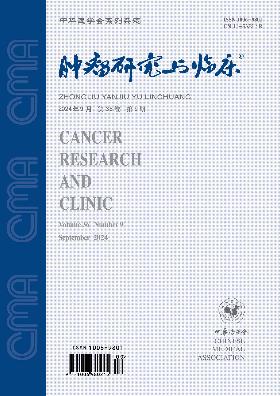肿瘤科漏诊护理自评量表的编制及心理测试
Q4 Medicine
引用次数: 0
摘要
目的编制适合我国医院文化背景的科学肿瘤学漏诊护理自评量表,并对其有效性和可靠性进行检验。方法采用文献资料法、定性访谈法和德尔菲专家咨询法编制初始量表。采用方便抽样的方法,共抽取山西省临床护士388名。项目分析用于筛选项目。采用结构有效性和内容有效性评定量表进行有效性评定,采用内部一致性、分半信度和复测信度进行信度检验。结果肿瘤漏诊护理自评量表共33项,包括护理评估、护理计划、基础护理和护理干预4个维度。探索性因素分析(EFA)显示,4个因素占累积方差的63.664%。量表水平内容有效性指数(S-CVI)为0.904。Cronbachα系数为0.948,分半信度系数为0.786,复测信度系数为0.833。结论肿瘤漏诊护理自评量表具有良好的有效性和可靠性,可作为肿瘤漏诊的测量工具。关键词:肿瘤;肿瘤护理;规模;可靠性;有效性本文章由计算机程序翻译,如有差异,请以英文原文为准。
Development and psychometric test of oncology missed nursing care self-rating scale
Objective
To develop a scientific oncology missed nursing care self-rating scale suitable for hospital culture background in China, and to test its validity and reliability.
Methods
The initial scale was formulated by literature review, qualitative interview and delphi expert consultation. A total of 388 clinical nurses from Shanxi Province were selected by convenience sampling. Item analysis was used to filtrate items. The validity was evaluated by using evaluation scale of construction and content validity, and the reliability was tested by using internal consistency, split-half reliability and retest reliability.
Results
Oncology missed nursing care self-rating scale consisted of 33 items and 4 dimensions including nursing assessment, nursing plan, basic nursing and nursing intervention. Exploratory factor analysis (EFA) revealed that 4 factors accounted for 63.664% of the accumulated variances. The scale-level content validity index (S-CVI) was 0.904. The Cronbach α coefficient was 0.948, the spilt-half reliability coefficient was 0.786, and the retest reliability coefficient was 0.833.
Conclusion
Oncology missed nursing care self-rating scale has good validity and reliability, which can be used as a measuring tool for oncology missed nursing care.
Key words:
Neoplasms; Oncologic nursing; Scale; Reliability; Validity
求助全文
通过发布文献求助,成功后即可免费获取论文全文。
去求助
来源期刊

肿瘤研究与临床
Medicine-Oncology
CiteScore
0.10
自引率
0.00%
发文量
7737
期刊介绍:
"Cancer Research and Clinic" is a series of magazines of the Chinese Medical Association under the supervision of the National Health Commission and sponsored by the Chinese Medical Association.
It mainly reflects scientific research results and academic trends in the field of malignant tumors. The main columns include monographs, guidelines and consensus, standards and norms, treatises, short treatises, survey reports, reviews, clinical pathology (case) discussions, case reports, etc. The readers are middle- and senior-level medical staff engaged in basic research and clinical work on malignant tumors.
 求助内容:
求助内容: 应助结果提醒方式:
应助结果提醒方式:


